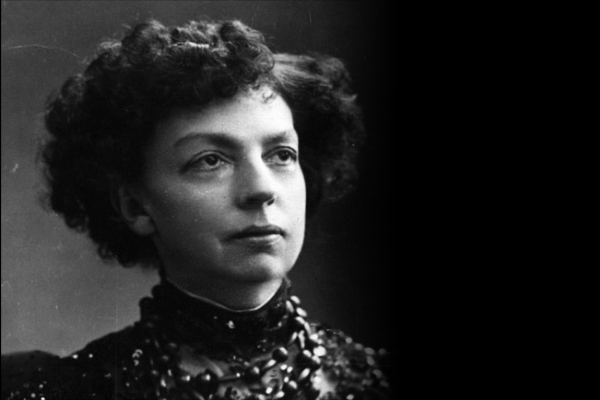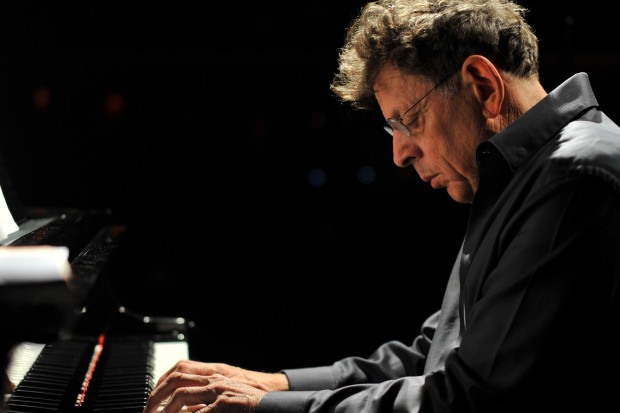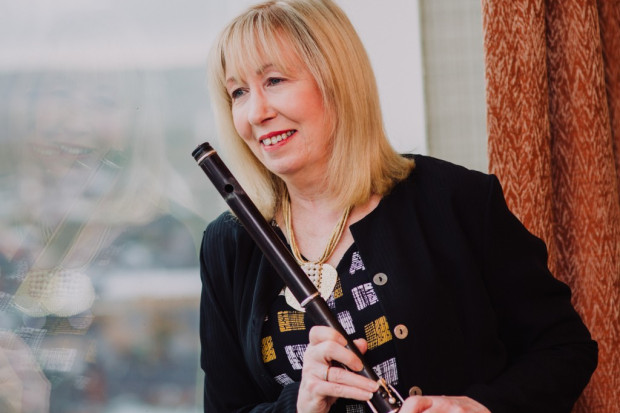
Cécile Chaminade
Against the Establishment
This Thursday 24 January, the third concert in the new Female Composer Series will take place at the National Concert Hall. Following concerts in November that featured the work of composers such as Rebecca Clarke and Leokadiya Kashperova, this event will focus on music from the French Belle Époque. The four featured composers – Lili Boulanger, Cécile Chaminade, Mel Bonis and Claude Debussy – were all active in Paris during this period.
A thriving spirit of optimism
From 1871 to 1914, the French capital became a by-word for a modern cosmopolitanism that encompassed social progress and the cultural avant-garde. One of the era’s monuments to technological advances was the Eiffel Tower, constructed in 1889 to mark the International Exposition held that year. A beacon of this era, it stands as an enduring symbol of the thriving spirit of optimism and liberation that energised the artists, writers and composers who produced landmark work under its shadow.
Impressionism remains a popular catch-all label for French artworks of this time. It suffices as a shorthand for everything from the revolutionary Monet studies of blended light and colour in the 1870s (his painting Impression, Sunrise is the origin of this term), to Baudelaire’s atmospheric poetry, to the opaque tonalities and sensual timbres frequently heard in Debussy and Ravel.
While such music is infused by colour that refuses to stay within the lines of traditional harmonic (and other) boundaries, it also transcends the static, fuzzy quality implied by a stylistic term which Debussy despised. In truth, compositions of this era often pulsate with an energy that reflects their creators’ responses to living in a rapidly changing metropolis. Moreover, the existence of some of these works is testament to a dynamic social evolution, particularly at the turn of the twentieth century, which enabled women to participate more fully in the music profession.

Claude Monet’s Impression, Sunrise
Challenging prejudices
Until the 1870s, the Paris Conservatoire prohibited women from studying composition or harmony. Voice and keyboard classes were deemed more appropriate for young ladies; it was acceptable for them to aspire to careers in performance but not composition. Owing to a change in institutional policy, women like Mélanie Bonis (1858–1937) were permitted to join in composition lessons alongside their male counterparts such as Debussy. Yet Bonis’ own family frowned upon her ambitions. To the disappointment of her teachers, as Bonis’ biographer Christine Géliot writes, her parents removed her from the Conservatoire and arranged a marriage for her with a much older widower. Forced into a domestic role, she ceased composition for over a decade until she reconnected in the 1890s with the singer Amédée Hettich who offered practical encouragement for her to pursue her creative goals. The pieces on Thursday’s concert programme (Carillon mystique for piano, and the Sonata in C sharp minor for flute and piano) date from 1898 and 1904 respectively. Her prolific catalogue, including this substantial, passionate sonata, challenged prejudices that women could compose only stereotypically ‘feminine’, frothy material.
Cécile Chaminade (1857–1944), another Paris-born composer, regularly encountered this type of gendered bias. Musicologist Marcia Citron points out that Chaminade was caught in a double bind: her ‘sweet and charming’ songs and character pieces for solo piano were denigrated by critics as ‘too feminine’, yet those cultural gatekeepers also attacked her contrasting large-scale, rigorously developed works for piano and orchestra as ‘unsuited to [her] womanly nature’. The latter verdict was especially unjust and unfounded considering that Chaminade was an internationally acclaimed concert pianist with a consummate understanding of such music. This concert highlights the diversity of Chaminade’s output: it features the Concertino in D (1902) – a work commissioned by the Paris Conservatoire and which remains a staple of the flute repertoire – as well as a couple of her short lyrical pieces for violin and piano.
Femme nouvelle
By the turn of the twentieth century, the French musical establishment was less hostile to women’s participation in the profession. This reflected the rise of the femme nouvelle (the ‘New Woman’). Across Paris, London and elsewhere, women grew increasingly vocal in their demands for freedom and equality. Parisian femmes nouvelles such as the actress Sarah Bernhardt and the writer Colette publicly rejected socially prescribed gender norms, striving for economic independence and social status instead. Seeking liberation from the shackles of traditional marriage and motherhood, they frequently pursued illicit romantic relationships.
Concomitantly, increased acknowledgement of female sexuality, and eroticism more generally, is evident in French music of this time, in operas such as Dukas’s Ariane et Barbe-Bleue (1907). Several scores by Claude Debussy (1862–1918), including the solo flute piece Syrinx programmed for this concert, similarly engage with this theme. Julie McQuinn has described how it expresses Debussy’s preoccupation with ‘the erotic power of the syrinx, its ability to seduce with its floating melody’.
The second Debussy score on the programme, the compact Sonata for violin and piano (1917), was his last major work. It is a close contemporary of the two featured pieces by Lili Boulanger (1893–1918), Cortège (1914) and D’Un Matin de printemps (1918). Boulanger benefitted from the Paris Conservatoire’s decision in 1903 to open its annual composition contest to women. After her sister Nadia competed in 1908 and 1909, Lili became the first female winner of the Prix de Rome in 1913. As Annegret Fauser’s research has shown, Lili’s success was publicly celebrated partly because she represented a less threatening image of womanhood than the self-sufficient femme nouvelle. Unlike Nadia who could support herself financially, Lili was ill for much of her short life and embodied the ‘femme fragile […] who needed the support and help of the strong masculine sex’.
Yet, she left a legacy of vital works that testify to an artistic intelligence and sensibility undimmed by her physical suffering. Lili Boulanger and Debussy died in 1918, the year the First World War ended. In their last years they both remained creative despite a backdrop of personal suffering and political upheaval. This is merely one of the points that connects these two Parisian musicians. While women composers encountered misogynistic discrimination by some critics and other establishment figures during this period, listeners today are in a position to recognise that there is much more that aesthetically unites male and female composers of the French Belle Epoque than the gender differences that historically differentiated them.
The third Female Composer Series concert, Femmes de la Belle Époque, featuring Miriam Kaczor, flute (replacing Sharon Carty), Gillian Williams violin (replacing Fionnuala Hunt) and Úna Hunt piano, will take place on Thursday 24 January at 7.30pm in the Kevin Barry Room at the National Concert Hall. The Female Composer Series is part of a five-year National Concert Hall and Sounding the Feminists initiative. For tickets, visit www.nch.ie.
Published on 22 January 2019
Dr Laura Watson is Associate Professor of Music at Maynooth University.















